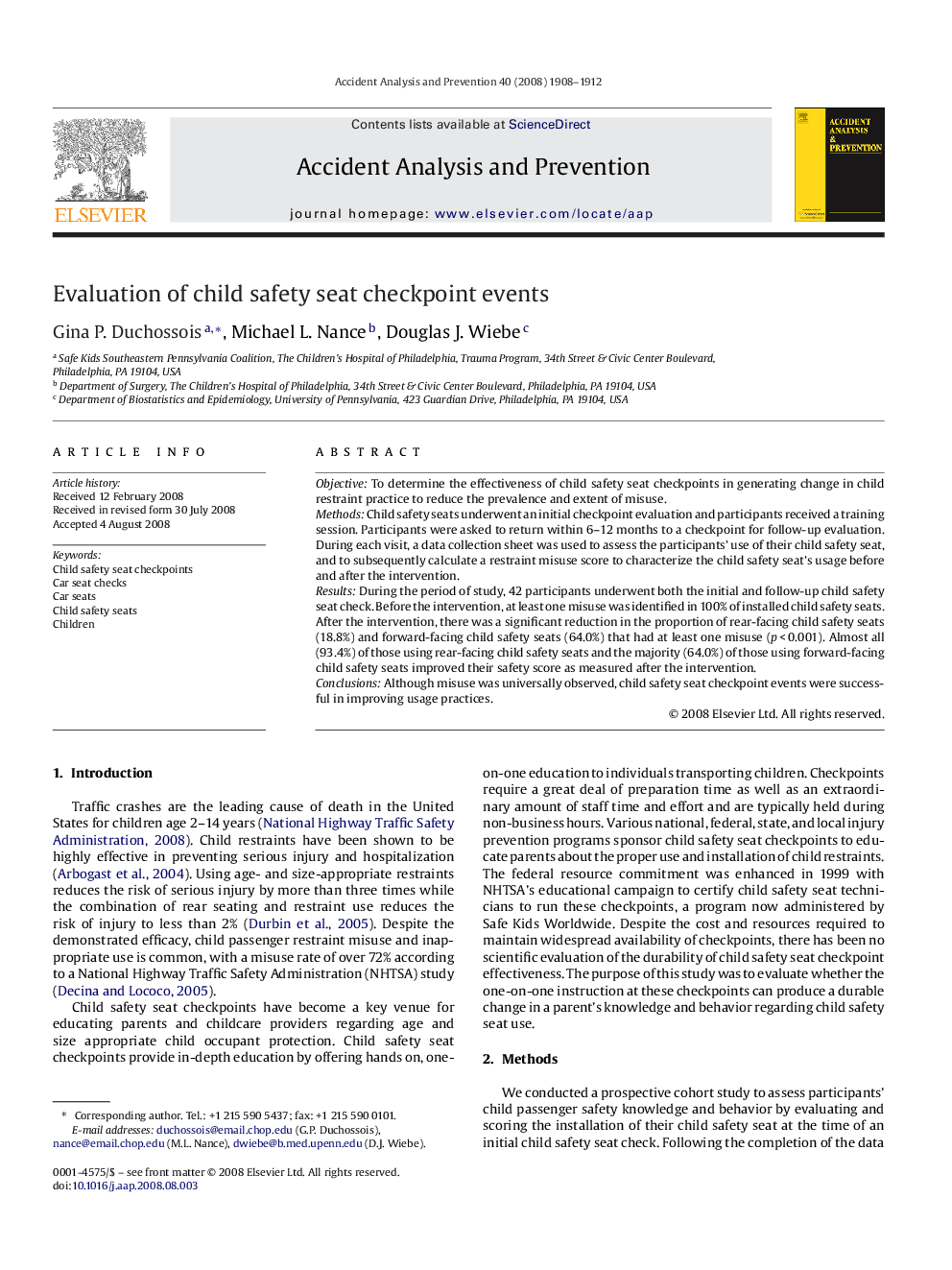| Article ID | Journal | Published Year | Pages | File Type |
|---|---|---|---|---|
| 573330 | Accident Analysis & Prevention | 2008 | 5 Pages |
ObjectiveTo determine the effectiveness of child safety seat checkpoints in generating change in child restraint practice to reduce the prevalence and extent of misuse.MethodsChild safety seats underwent an initial checkpoint evaluation and participants received a training session. Participants were asked to return within 6–12 months to a checkpoint for follow-up evaluation. During each visit, a data collection sheet was used to assess the participants’ use of their child safety seat, and to subsequently calculate a restraint misuse score to characterize the child safety seat's usage before and after the intervention.ResultsDuring the period of study, 42 participants underwent both the initial and follow-up child safety seat check. Before the intervention, at least one misuse was identified in 100% of installed child safety seats. After the intervention, there was a significant reduction in the proportion of rear-facing child safety seats (18.8%) and forward-facing child safety seats (64.0%) that had at least one misuse (p < 0.001). Almost all (93.4%) of those using rear-facing child safety seats and the majority (64.0%) of those using forward-facing child safety seats improved their safety score as measured after the intervention.ConclusionsAlthough misuse was universally observed, child safety seat checkpoint events were successful in improving usage practices.
